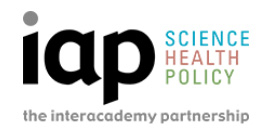Assessing and addressing sexual harassment of women in academia
Overview
Sexual harassment remains a pervasive problem in science, technology, engineering and mathematics (STEM) environments around the world, affecting scientists of all genders, but with a disproportionate impact on women (International Labour Organization, 2022). By failing to address sexual harassment, women are systematically pushed out of colleges, universities, laboratories and other academic institutions. This translates to the loss of critical perspectives and solutions in science, engineering and medicine, undermining innovation in STEM. Therefore, sexual harassment of women is not just bad for women; it is bad for the economy and society.
Sexual harassment has long been thought as a spectrum of behaviors (Carrell, 2000). The most publicly recognized form of sexual harassment is related to sexual conquest and includes unwanted sexual advances, sexual coercion and rape. Though most frequently understood as sexual harassment, this is in fact the least common form of harassment. The most common sexual harassment behaviour is “put-downs”, such as comments, jokes, gestures, that may or may not have sexual content, often referred to as gender harassment. Though more common, this has historically not risen into public consciousness to the same degree, leading to less attention and awareness. Additionally, these put-downs are often hard to confront; although sexual conquest is an obvious violation of laws and policies, gender harassment in academic environments can be masqueraded as scholarly criticism (Clancy et al., 2020). A 2018 report by the U.S. National Academies found that gender harassment that is severe or occurs frequently can result in the same level of negative professional and psychological outcomes as isolated instances of sexual coercion (NASEM, 2018). The same report notes that while adherence to legal requirements is necessary, it is not sufficient to drive the change needed to address sexual harassment. The report makes several recommendations focusing on creating diverse, inclusive and respectful environments; improving transparency and accountability; diffusing the hierarchical and dependent relationship between trainees and faculty, and providing support for those targeted by sexual harassment.
Currently, quantifying the scale of the problem of sexual harassment of women in academia at a global level is impeded by minimal levels of reporting and data. Additionally, the lack of consensus on what constitutes sexual harassment, how it can be measured, and differences in relevant domestic laws, make it difficult to compare prevalence estimates globally. Despite the challenges with assessing prevalence of sexual harassment in academia at a global level, existing evidence suggests it is prevalent across the globe as well. Evidence-based policy recommendations and rigorously evaluated prevention and response strategies in academia are needed. National academies worldwide can play an important role in assessing the magnitude of sexual harassment and in leading and inspiring change. Academies are seen as prestigious organizations that lead the path to science integrity and can serve as neutral conveners to facilitate discussion and coordinate work across academic organizations. However, they have often been slow to respond to social change including in sexual harassment policies.
In April 2023, IAP, in collaboration with the U.S. National Academies held three brainstorming sessions with representatives from IAP member academies in Australia, Brazil, Canada, India, Iran, Macedonia, Palestine and South Africa, to exchange information and views on the current efforts and needs to address sexual harassment. Several themes were distilled from these sessions including:
- The need to raise awareness of the different behaviours of sexual harassment.
- The importance to recognize and address local cultural factors that can assist or hinder efforts to reduce and eliminate sexual harassment.
- The profound stigma and shame associated with speaking out about experiences with sexual harassment or assault in some parts of the world.
- The existence of legal loopholes that allow sexual harassment to continue in academia.
- The need to implement nation- or region-specific evidence-based prevention strategies to address sexual harassment globally.
- The need for global commitment to address sexual harassment to ensure collaborations, international exchange programmes and international academic meetings offer a safe environment for women.
There was a general agreement among session participants that addressing sexual harassment can empower women to pursue or continue studies and careers in science, engineering and medicine and can preserve research integrity.
Statement of Task
The InterAcademy Partnership, in coordination with the U.S. National Academies of Sciences, Engineering and Medicine, proposes to carry out Phase 1 of a two-phased project to assess and address sexual harassment in academia globally. Phase 1 will convene experts around the world to discuss available data on causes, impacts and challenges in addressing sexual harassment of women in academia and possible approaches to prevent it. The convening activity will be a workshop organized by IAP and the U.S. National Academies. Workshop participants will discuss the following:
- Available data on how sexual harassment is defined in different countries and regions, how common it is perceived to be, how commonly it occurs and what characteristics of environments make them more likely to have incidences of sexual harassment.
- Consequences associated with experiencing sexual harassment for individuals, institutions and the broader scientific enterprise.
- Existing legal and policy mechanisms that regulate sexual harassment and their effectiveness in reducing sexual harassment.
- Ongoing national and regional efforts to create evidence-based policies, strategies and practices that could be successful in preventing and addressing sexual harassment.
- The need for a global commitment to address sexual harassment to ensure collaborations, international exchange programmes and international academic meetings offer a safe environment for women.
People and Institutions

